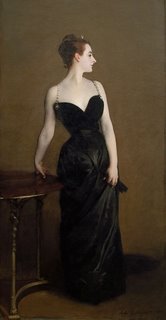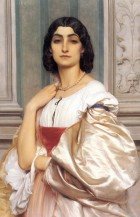 As an art teacher, I hear it all - from "I love to draw" to "I can't draw a straight line!". Drawing is a learned skill like many other endeavors, and this exhibit features drawing manuals from the 18th - 20th centuries. During this time period art instruction was not a specialty subject like it is now, but was part of a well-rounded education. When we draw, we "see" the world in a unique perspective. Through the use of our body and mind to record what we see, the barriers of inside and outside become blurred - we create a special experience for ourselves regardless of the artistic outcome. People these days take drawing too seriously when it is truly meant to be a fun, creative activity. Our ancestors appreciated it for what it was - a part of a well-rounded education!
As an art teacher, I hear it all - from "I love to draw" to "I can't draw a straight line!". Drawing is a learned skill like many other endeavors, and this exhibit features drawing manuals from the 18th - 20th centuries. During this time period art instruction was not a specialty subject like it is now, but was part of a well-rounded education. When we draw, we "see" the world in a unique perspective. Through the use of our body and mind to record what we see, the barriers of inside and outside become blurred - we create a special experience for ourselves regardless of the artistic outcome. People these days take drawing too seriously when it is truly meant to be a fun, creative activity. Our ancestors appreciated it for what it was - a part of a well-rounded education!
 My last summer fling took me to Colorado to visit family members. I happily found myself one evening in the company of two other studio artists as our foursome attended a play. After our outing, we returned to our meeting point, one of the women's home that was absolutely packed with original art that she had collected. What a joy to peruse her collection throughout her home - drawings, watercolors, oils - work that she had either created or had collected. Now, she did not have an original Sargent in her collection, but we brought him up during our conversation, comparing another's technique to Sargent's. An American painter who spent most of his life traveling in Europe in the last half of the 19th century, he established a reputation for himself as "the" portraitist of the rich and famous. He was, however, a respected generalist in the sense that whatever he decided to draw and paint (landscapes, street people, genre scenes) he was successful at. Clicking on the Artist of the Week headline will take you to Natasha Wallace's website devoted to the life and work of John Singer Sargent. You will find out about his life and see a catalogue of his work that is available on the Web. Enjoy!
My last summer fling took me to Colorado to visit family members. I happily found myself one evening in the company of two other studio artists as our foursome attended a play. After our outing, we returned to our meeting point, one of the women's home that was absolutely packed with original art that she had collected. What a joy to peruse her collection throughout her home - drawings, watercolors, oils - work that she had either created or had collected. Now, she did not have an original Sargent in her collection, but we brought him up during our conversation, comparing another's technique to Sargent's. An American painter who spent most of his life traveling in Europe in the last half of the 19th century, he established a reputation for himself as "the" portraitist of the rich and famous. He was, however, a respected generalist in the sense that whatever he decided to draw and paint (landscapes, street people, genre scenes) he was successful at. Clicking on the Artist of the Week headline will take you to Natasha Wallace's website devoted to the life and work of John Singer Sargent. You will find out about his life and see a catalogue of his work that is available on the Web. Enjoy!
Amazing juggling finale. This video is really spectacular! Chris Bliss combines the Beatles, juggling, and his incredible sense of rhythm into a mesmerizing juggling performance. Click on the Artist of the Week headline to view the video. Enjoy!
 I'm excited to have this list of links for myself! Last month I missed a Chuck Close exhibit because I didn't know what was going on around town. We have MANY great museums in the Dallas/Ft. Worth area - I decided to add them all to the links section (see right column) for easy access. They are in alphabetical order for quick searching. Keep abreast with exhibits throughout the year for yourself! My students - contact me about my last art adventure for the summer - an outing to the Fort Worth museums. If you're interested in meeting there, contact me!
I'm excited to have this list of links for myself! Last month I missed a Chuck Close exhibit because I didn't know what was going on around town. We have MANY great museums in the Dallas/Ft. Worth area - I decided to add them all to the links section (see right column) for easy access. They are in alphabetical order for quick searching. Keep abreast with exhibits throughout the year for yourself! My students - contact me about my last art adventure for the summer - an outing to the Fort Worth museums. If you're interested in meeting there, contact me!
 Images of these trucks showed up in an email, and I was entertained. The art technique of trompe l'oeil (an image that looks realistic but isn't) was being used to create drama in advertising. We know that trucks carry our goods, but by putting provocative designs on them, the advertising force is greatly increased! When I googled "German truck art", it took me to the Snopes.com site. Someone had written in to ask if these were 'for real' (pun intended!)! There was a design competition for ideas to be presented, and two products "Pringles" and "Pepsi" were the winners. Click on the headline above, it will take you to the Snopes site and you can click on the links that show the winning advertising on the real trucks as they rolled out! How effective is this idea in making YOU want to buy a certain product?
Images of these trucks showed up in an email, and I was entertained. The art technique of trompe l'oeil (an image that looks realistic but isn't) was being used to create drama in advertising. We know that trucks carry our goods, but by putting provocative designs on them, the advertising force is greatly increased! When I googled "German truck art", it took me to the Snopes.com site. Someone had written in to ask if these were 'for real' (pun intended!)! There was a design competition for ideas to be presented, and two products "Pringles" and "Pepsi" were the winners. Click on the headline above, it will take you to the Snopes site and you can click on the links that show the winning advertising on the real trucks as they rolled out! How effective is this idea in making YOU want to buy a certain product?
 A few years ago I was visiting a museum with my aunt and stumbled onto the work of William Morris. There was a stunning exhibition of his work that deeply affected me. This was long before I became a teacher of Art History. But even then, his use of glass and bronze to reinterpret ancient artifacts pushed a primordial button in me that left me breathless. Morris worked in Dale Chihuly's glass studio exploring that medium. Chihuly's work is certainly fantastic - splashy, grand in scale and compelling. But Morris's use of archeology and pagan cultures as subject matter connects our modern viewpoint to ancient times in a visceral way that spans the ages.
A few years ago I was visiting a museum with my aunt and stumbled onto the work of William Morris. There was a stunning exhibition of his work that deeply affected me. This was long before I became a teacher of Art History. But even then, his use of glass and bronze to reinterpret ancient artifacts pushed a primordial button in me that left me breathless. Morris worked in Dale Chihuly's glass studio exploring that medium. Chihuly's work is certainly fantastic - splashy, grand in scale and compelling. But Morris's use of archeology and pagan cultures as subject matter connects our modern viewpoint to ancient times in a visceral way that spans the ages.
 I'm in Houston this week attending an AP Studio Art Summer Institute at Rice University. I really started getting excited about my trip on the drive to Houston when I saw billboards advertising this exhibit at the Houston Museum of Natural Science. Body Worlds has been traveling around for awhile, but this is my first opportunity to view it. Dr. Gunther von Hagens developed a process called Plastination which preserves the human body from decay. Donors have willed their bodies to go through this process which create the exhibit. What a revolutionary process!! During the Renaissance, artists such as Leonardo da Vinci were obtaining cadavers for the purpose of studying the anatomical structure of the human and the beginning of serious science illustration began which greatly furthered developments in medicine. The human body continues to offer the greatest challenges for artists - understanding the structure of our bodies is the first step in successfully capturing their magic in art. The exhibit runs through September 4, 2006 at the Houston museum. Worth a trip to Houston!!
I'm in Houston this week attending an AP Studio Art Summer Institute at Rice University. I really started getting excited about my trip on the drive to Houston when I saw billboards advertising this exhibit at the Houston Museum of Natural Science. Body Worlds has been traveling around for awhile, but this is my first opportunity to view it. Dr. Gunther von Hagens developed a process called Plastination which preserves the human body from decay. Donors have willed their bodies to go through this process which create the exhibit. What a revolutionary process!! During the Renaissance, artists such as Leonardo da Vinci were obtaining cadavers for the purpose of studying the anatomical structure of the human and the beginning of serious science illustration began which greatly furthered developments in medicine. The human body continues to offer the greatest challenges for artists - understanding the structure of our bodies is the first step in successfully capturing their magic in art. The exhibit runs through September 4, 2006 at the Houston museum. Worth a trip to Houston!!
 Thanks to Mr. Martin, I got turned onto this artist that uses an Etch-A-Sketch to create his art. His name is George Vlosich III and the process takes him 60-70 hours per portrait/composition to complete - without EVER making a mistake!! His skill at using this great tool results in fabulous pop art! Be sure to check out the link on his website that explains and shows the process. Incredible! I remember using one myself and the diagonal lines were the most difficult for me - it was much easier to manuver horizontally and vertically. For those of us who grew up in the 50's and 60's, there are strong memories with this being a popular toy (reeeaaallllly great for long car trips!) - and they were definitely around. I had one myself and noodled around on it, but I had no idea it was such an expressive medium!! I really have great respect for this artist - what success, what ingenuity, and what talent! Hope you have been introduced to a new artist this week!
Thanks to Mr. Martin, I got turned onto this artist that uses an Etch-A-Sketch to create his art. His name is George Vlosich III and the process takes him 60-70 hours per portrait/composition to complete - without EVER making a mistake!! His skill at using this great tool results in fabulous pop art! Be sure to check out the link on his website that explains and shows the process. Incredible! I remember using one myself and the diagonal lines were the most difficult for me - it was much easier to manuver horizontally and vertically. For those of us who grew up in the 50's and 60's, there are strong memories with this being a popular toy (reeeaaallllly great for long car trips!) - and they were definitely around. I had one myself and noodled around on it, but I had no idea it was such an expressive medium!! I really have great respect for this artist - what success, what ingenuity, and what talent! Hope you have been introduced to a new artist this week!
 An interesting discussion was had at a recent dinner party about the meaning of modern and contemporary art. As a new art history educator, I felt compelled to defend modern art (which I like!) to one fellow who thought it was nonsense. I encourage my students to have an attitude of personal acceptance or rejection to any art object, with the caviat that the viewer needs to be able to articulate WHY they like or dislike a piece. This site, The Art Renewal Center, is an interesting one! They reject the modernist aesthetic and claim that the only path to meaningful art it through the masters (many of whom they claim have been left out of the "canon"), through realism, universal themes and skill. I have purposely linked to their mission statement (which is always a good place to start). This site has a ton 'o stuff to peruse. I see some interesting discussions in my future!
An interesting discussion was had at a recent dinner party about the meaning of modern and contemporary art. As a new art history educator, I felt compelled to defend modern art (which I like!) to one fellow who thought it was nonsense. I encourage my students to have an attitude of personal acceptance or rejection to any art object, with the caviat that the viewer needs to be able to articulate WHY they like or dislike a piece. This site, The Art Renewal Center, is an interesting one! They reject the modernist aesthetic and claim that the only path to meaningful art it through the masters (many of whom they claim have been left out of the "canon"), through realism, universal themes and skill. I have purposely linked to their mission statement (which is always a good place to start). This site has a ton 'o stuff to peruse. I see some interesting discussions in my future!
 The exhibit at the Phillips Collection in Washington shows artists such as Paul Klee, Pablo Picasso and Winslow Homer feature the work they did as children. See the story link above to NPR's coverage of the exhibit. It's an interesting time of life to look at art development. Children's art around the world has a universality that is astonishing. Use of shape, line, color, etc. does not vary much from one culture to another. "When We Were Young: New Perspectives on the Art of the Child", edited by Jonathan Fineberg, an art history professor at the University of Illinois is an upcoming publication. (Fineberg also curated the Phillips exhibit.)Children produce wonderful art - watch for in in your travels!
The exhibit at the Phillips Collection in Washington shows artists such as Paul Klee, Pablo Picasso and Winslow Homer feature the work they did as children. See the story link above to NPR's coverage of the exhibit. It's an interesting time of life to look at art development. Children's art around the world has a universality that is astonishing. Use of shape, line, color, etc. does not vary much from one culture to another. "When We Were Young: New Perspectives on the Art of the Child", edited by Jonathan Fineberg, an art history professor at the University of Illinois is an upcoming publication. (Fineberg also curated the Phillips exhibit.)Children produce wonderful art - watch for in in your travels!








